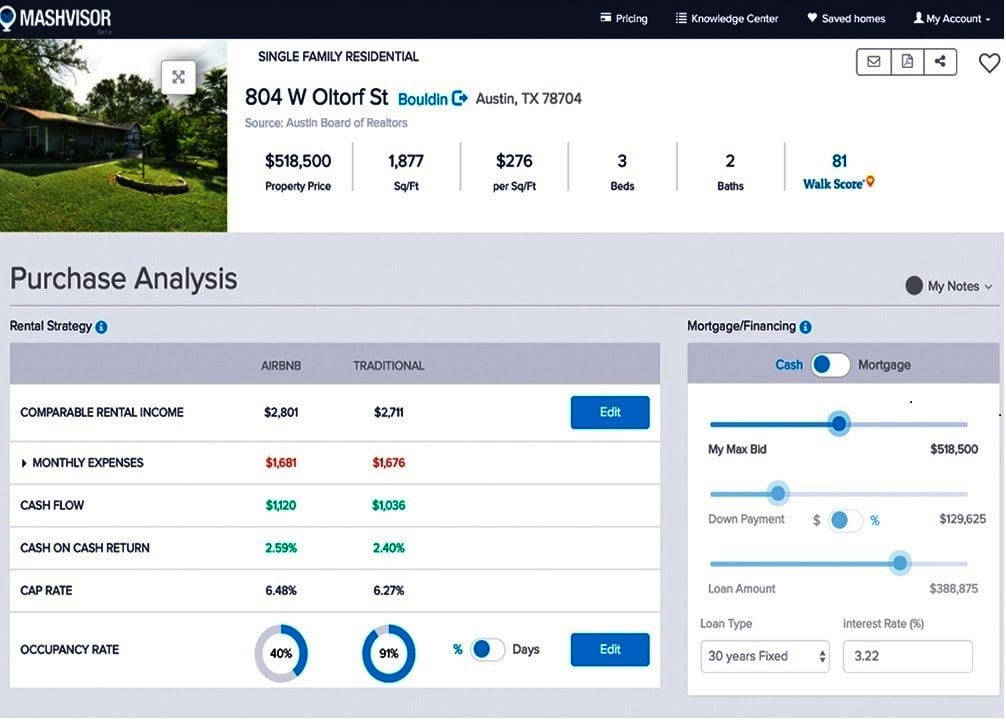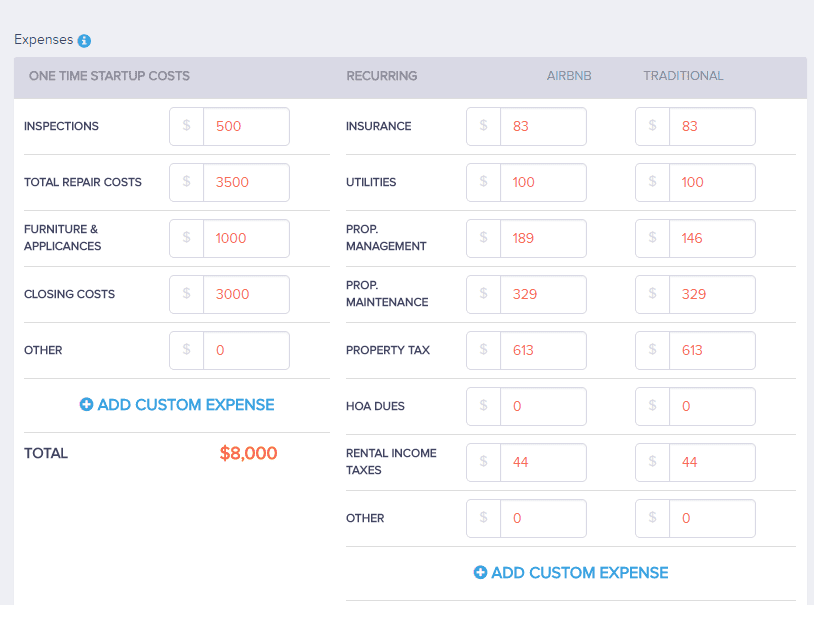So, you think you can invest? If you’ve been thinking about getting into real estate investing, then you clearly have some idea of how rewarding it is to invest in property. The ability to buy an investment property, create an additional income, have someone else pay for the house, and then sell it later for a huge profit sounds like the financial success we all want, right? Unfortunately, the first step is the hardest – actually buying the property.
To buy an investment property, a minimum down-payment of 20% is typically required. While there are ways to invest in real estate with no money, which we’ll go into detail later, keep in mind cash flow is proportionate to the size of the down-payment. The larger the down-payment, the less monthly expenses, and the more money you get to keep.
Saving money in order to buy an investment property is actually not as difficult as one might perceive it to be. It’s about management, planning, and being aware of all of different options.
Before diving into the how-tos, understand some of these basics:
- Positive cash-flow is achievable and best when a 20% down-payment is made
- Buying investment properties with no money or with little money is doable, but cash flow isn’t as much nor is it as easy to achieve
- Rehab properties, or properties that need repairs or fixing up, can be bought at a lower price, but cash on the side is needed for the repairs
- Paying less money for a property and having cash flow is possible; the key is to buy cheaper properties
- The sooner you start saving, the better
- Should you decide to finance a investment property by putting less than 20%, make sure to understand the additional risks, time, or money it may take to receive profits
Related: 5 Ways To Create A Positive Cash Flow Income Property
Steps To Saving Money
These are the steps to take in order to accumulate enough capital to buy an investment property. Although this is a step-by-step guide, you may find yourself taking two steps at a time, or taking all steps simultaneously.

1. Believing and Setting Goals
If you’re convinced that saving money for investing is not feasible, for whatever reason, it will make saving money a lot harder. You have to believe that saving money is possible and doable, and from there, you can better set goals to turn this belief into a reality.
First goal: determine how much of your income you’re going to save every month – 10 percent, 20 percent? Do I hear 50 percent?
2. Put Away Income
Actually, financial experts recommend putting away as much as 50% of your income, which can be difficult to do, even if you make “very good” money. Once you know where to make the cuts, put money away before paying your bills. If the goal is to set aside a certain percentage of your salary every month before paying monthly expenses, this compels you to stick and work with the remaining amount. Start off with 10% but gradually aim to reach 50%.
I suggest that you put this on your bathroom mirror to remind yourself why you’ve saving money:
I want to put a 20% down-payment on an investment property because I want positive cash-flow.
This will allow me to 1) gain an additional income 2) gain equity into the house 3) sell the house later for a profit.
3. Budgeting, Tracking, and Prioritizing
Start tracking all spending – from monthly bills to eating out. If tracking reveals something daunting, look at the positive side: you now know how and where to make cuts. Don’t forget about the new spending limit, if you’re really trying to put away a percentage of your income.
After tracking expenses, break them down into two lists: the essentials and inessentials. This will help highlight any extra, unnecessary costs you didn’t notice before.
Just the other day, I went through my bank statement and saw that I was getting charged $13.00 every month. At that point, I remembered I had upgraded my subscription on a graphic design website, because I needed to use a paid feature only once, which is why I was getting charged every month since. Whether or not that is considered a significant amount of money, I haven’t used the site since the upgrade. So, I canceled my subscription and subsequently, am saving money. It’s the little things like this that can make a difference.

Related: Best Places to Buy an Investment Property on a Budget
4. Master The Art of Saving
You now have your new set budget, the necessary expenses, and the not-so-necessary expenses. How can you save on the necessary expenses? There are so many hacks to saving money that are right under our nose. Some of these hack are obvious, like paying off credit card bills, some are challenging, like walking to work, and some are easy, like getting a cheaper cell phone plan. Read about more tricks to save money.
As for the optional expenses, see where you can reduce or eliminate costs. Keep in mind, making cuts doesn’t always necessarily mean to stop buying or spending money on something. It can also mean finding other means to pay for something, like perks. For example, you might find that you get discounts at hardware stores as an investor.
I’ll never forget the time I was at a department store and saw there was a discount for those that had an exclusive coupon. I assumed I wasn’t going to be able to get it until my aunt went to the dressing room area, got one of the employees, showed them the advertisement, and got the coupon. It was so easy, talk about the power of asking.
Start outlining which expenses can be reduced. Cuts here and there go a long way. Get to a point where more money is coming in than going out.
5. Make More Money
Well, duh. But I have news for you, it might be easier to make more money than you think. Take a look at three easy ways.
- Again, just asking goes a long way. If you have a full-time job, ask for a raise. Think about why you deserve a raise and communicate your reasoning to your manager.
- Refinance. If you already own a home, refinancing the house can reduce costs, and allow you to save more money. Refinancing basically means changing your mortgage, in order to get a better interest rate and term. Consider a cash-out refinance.
- Take up another job. This doesn’t have to be as difficult as it sounds. Think about ways to make money from home. You could take up tutoring, editing, writing, or other freelancing jobs that are doable from home but can generate a good amount of income.
- Make money online. There are so many opportunities to earn money online that you might not be aware of or you might have never envisioned yourself doing. For example, you can review products, write blogs, become an affiliate, fill surveys, invest in real estate crowdfunding, and many others. The sky is the limit.
6. Evaluate Efforts
Take a hard, close look at which expenses you kept, which expenses didn’t change. Could you be saving more? If you did not eliminate any expenses, it’s possible that your saving percentage is not high enough.
7. Know How Much You Need
One of the best ways to set a realistic goal to save money, specifically to invest in real estate, is knowing how much money you need to buy an investment property. Not only is down-payment required, but there are other monthly costs, including maintenance and vacancy provisions. Take a look at how to do an investment property analysis.
Use Mashvisor to find investment properties for sale and get an idea of a property’s expenses. The investment property calculator allows you to enter additional expenses and get returns automatically calculated.
 The purchase analysis above shows the expected expenses and returns. These expenses can be broken down and altered, just as displayed below.
The purchase analysis above shows the expected expenses and returns. These expenses can be broken down and altered, just as displayed below.

You Saved Money, Now What?
Let me tell you a classic mistake most home-buyers make: they begin looking for properties before getting pre-approved from the bank. Yes, we looked at properties on Mashvisor, but that was to get an idea of the general and average expenses of an investment property, based on property type and location. Hence, educational purposes. Look for investment properties after getting pre-approved from the bank. Why? The pre-approval letter sets a budget and tells buyers where they stand, preventing them from getting their hopes up.
Related: Worst Home-Buying Mistakes and Best Tips for Homebuyers and Investors
Here’s a trick to saving money even after getting the pre-approval letter: don’t borrow the entire amount (total approved amount). Just because the bank is permitting you to borrow more money doesn’t mean you should buy the most expensive investment property. The cheaper the investment property, the higher the cash flow. Think about it, the less you borrow, the higher the down-payment, the smaller the mortgage payments, and the higher the revenue every month.
Alternative Ways To Buy An Investment Property
While we’re clearly encouraging you to save for a 20% down-payment, it’s worth mentioning the alternative ways to buy an investment property without a 20% down-payment. These strategies to finance a rental property, among other methods, are frowned upon by some investors and financial experts, because they can come with higher risks and costs. If you’re thinking about using one of these strategies to buy an investment property, be aware of everything that comes with the territory.
- Partnerships. As the saying goes, it’s not what you know, it’s who you know. A partnership with another investor can allow you to put less money down and get a share of the profits. Don’t partner with someone that is a complete novice in real estate investing, but rather, work with someone who has experience or that will complement your skill set.
There are partnerships that don’t require both parties to put money down. You can find an investor willing to pay the 20% down-payment and closing costs, while you are responsible for the brains of the investment. Meaning, you do the actual work while they provide the financial resources. No matter what type of partnership is pursued, outlining everything in an official document is crucial.
- Owner-Occupant. Applying for a FHA loan only requires a down-payment of 3.5%, but the property borrower has to live in the property. What many investors do to work around this requirement, is buy a duplex or multi-family property, in order to be able to live in one unit while renting out another unit. Unfortunately, borrowers are required to pay a private mortgage insurance (PMI) fee, in order to protect the lender in case loan payments are not made. That’s another cost to worry about.
- Trade in an asset for a property. Do you have a valuable asset or service that you can provide in exchange for a property or down-payment? Some people will trade in cars, or contracting services in exchange for a down-payment.
Related: 9 Ways to Invest in Real Estate With Little or No Money
Millions of People are Doing It, So Can You
There are over 28 million real estate investors in America, and do you know why?
- Real estate is a safe and lucrative investment.
- People have the ability to buy things with good credit scores (not just cash).
- More people are recognizing the increasing amount of renters in the country.
Saving money doesn’t have to be hard. Decide what expenses are priorities, and find better, efficient ways to pay for them.
Related: Become Part of the 7 Million American Successful Real Estate Investors
